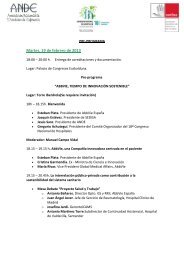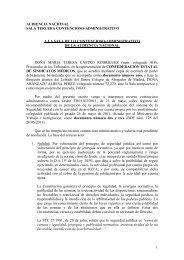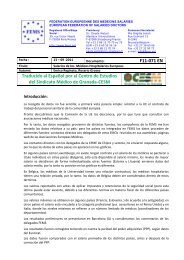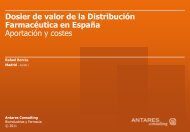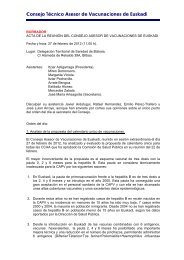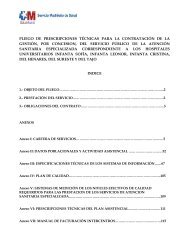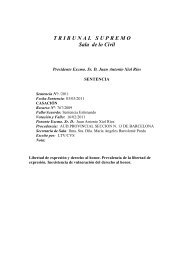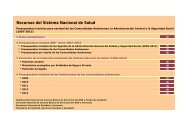Sistemas de monitorización continua de glucosa en tiempo real
Sistemas de monitorización continua de glucosa en tiempo real
Sistemas de monitorización continua de glucosa en tiempo real
You also want an ePaper? Increase the reach of your titles
YUMPU automatically turns print PDFs into web optimized ePapers that Google loves.
Executive summary<br />
Introduction<br />
The <strong>real</strong> time continuous glucose monitoring system (CGMS-RT) uses minimally<br />
invasive <strong>de</strong>vices to measure glucose levels in interstitial fluid surrounding<br />
the cells of the skin, giving more information on blood glucose fluctuations<br />
and providing a broa<strong>de</strong>r view of glucose levels throughout the day.<br />
Objectives<br />
To analyze the sci<strong>en</strong>tific evi<strong>de</strong>nce on the efficacy and safety of CGMS-RT,<br />
for glucose control, in comparison with the self-monitoring blood glucose<br />
system in adults, for paediatric and adult pati<strong>en</strong>ts with diabetes mellitus<br />
type 1 (DM1).<br />
Methodology<br />
A systematic review of the sci<strong>en</strong>tific literature was conducted by searching<br />
for papers published from 2006 until July 2010 in the main bibliographic<br />
databases, to find clinical practice gui<strong>de</strong>lines, reports, reviews and metaanalysis,<br />
and original studies in adults and paediatric population with<br />
DM1. The objective is to compare the use of CGMS-TR, with or without<br />
continuous subcutaneous insulin infusion (CSII), with the standard Self-<br />
Monitoring of Blood Glucose (SMBG). Outcomes were: glycated haemoglobin<br />
(HbA 1C<br />
) as a measure of metabolic control, frequ<strong>en</strong>cy or duration<br />
of episo<strong>de</strong>s of hypo- or hyperglycaemia, safety, acceptability and health<br />
related quality of life (HRQoL). For the assessm<strong>en</strong>t of methodological<br />
quality of the i<strong>de</strong>ntified publications, the criteria of Scottish Intercollegiate<br />
Gui<strong>de</strong>lines Network (SIGN) were used. Data from accepted studies<br />
were abstracted into evi<strong>de</strong>nce tables.<br />
Results<br />
Fourte<strong>en</strong> randomized controlled trials and 2 before and after studies were<br />
selected. Of these studies, 7 were carried out in adults, 2 in childr<strong>en</strong> and 7,<br />
in mixed-age sample. The methodological quality of the studies was consi<strong>de</strong>red<br />
mo<strong>de</strong>rate. In g<strong>en</strong>eral, the use of CGMS-RT <strong>de</strong>creased HbA 1C<br />
levels,<br />
but only in few cases significant differ<strong>en</strong>ces were found in adults and paediatrics<br />
compared to the SMBG. The results on the frequ<strong>en</strong>cy and duration of<br />
hypo and hyperglycaemia were quite variable with a t<strong>en</strong><strong>de</strong>ncy of their better<br />
SISTEMAS DE MONITORIZACIÓN CONTINUA DE GLUCOSA EN TIEMPO REAL<br />
13


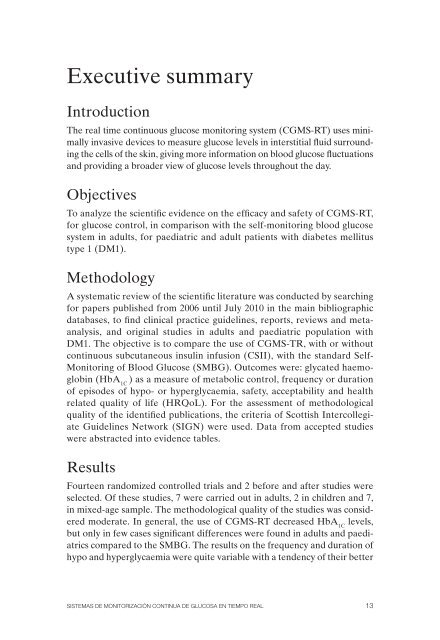
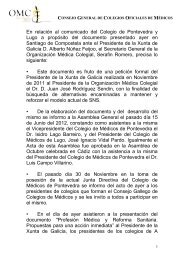
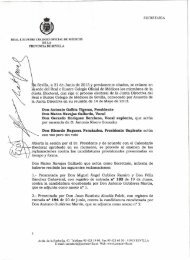

 XXX draft ...](https://img.yumpu.com/50676522/1/184x260/european-commission-brussels-xxx-a2012-xxx-draft-.jpg?quality=85)

